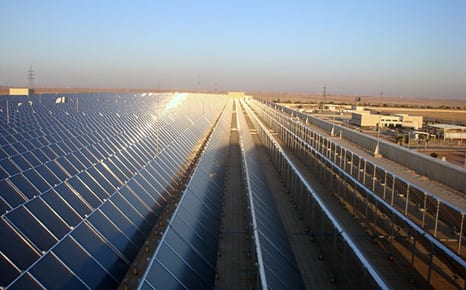In defending the federal government’s decision to bar the Clean Energy Finance Corporation (CEFC) from investing in wind and small-scale solar power, environment minister Greg Hunt explained to ABC Radio what he sees as the future direction for the CEFC. He said that the funding was to focus on projects that were “not mature and not commercial”, identifying three main areas as worthy recipients of investment:
- large-scale solar, including new solar thermal technologies
- emerging technologies such as wave energy
- measures to improve energy efficiency.
Yet despite Hunt’s claim that these objectives are consistent with the reasons why CEFC was first established, they are not. The CEFC was not designed to back minor players; it was set up to make money from relatively safe investments. As its website states:
The CEFC focuses on projects and technologies at the later stages of development which have a positive expected rate of return and have the capacity to service and repay capital.
True, the corporation’s 2018 Portfolio Vision envisages around half of its investments being made in “energy efficiency and low emissions” projects, but the other half of its portfolio, focused on renewable energy, features wind and solar photovoltaic at the top of the list. How does Hunt’s description of “not mature and not commercial” relate to the CEFC’s mission to invest in “later stages of development which have a positive expected rate of return”?
The renewable energy goalposts appear to be moving yet again, although many would question whether they have held any stationary position in Australia over the past few years.
New technologies already have an agency
Most people would agree that emerging renewable energy technologies need support, particularly during the “not mature and not commercial” stage. But that is the job of the Australian Renewable Energy Agency (ARENA). This body was put in place to provide funding (not loans) to develop emerging technologies to a point where the commercialisation stage is within reach. Then, with commercial viability on the horizon but not yet secure, the CEFC can step into a zone where commercial lenders might not dare tread.
If we look at ARENA’s objectives, we see that they are stated as:
…to improve the competitiveness of renewable energy technologies and to increase the supply of renewable energy within Australia.
The government’s latest move appears to shift the responsibility for delivering emerging renewable energy technologies from ARENA (a taxpayer-financed support agency) to the CEFC (a statutory finance institution).
It is not difficult to imagine that the government will argue that ARENA will become redundant should this change in responsibilities occur. And thus another nail would be hammered into the already built coffin of renewable energy support in Australia.
Remember the RET
A complete picture of the issue also needs to take account of the Renewable Energy Target (RET), and indeed Hunt did refer to it several times during his interview. While this program is, to quote the minister, “a mandate” for renewable energy, the benefits are only obtainable after the infrastructure is in place and generating electricity.
A joined-up, comprehensive renewables policy would use the already existing agencies to do the following:
- fund technology development (ARENA);
- finance potentially commercially viable technologies (CEFC); and
- support existing renewables until competitive with fossil fuels (RET).
All of the above programs are important if we want to move from our current position to a more sustainable energy future, where energy security is not reliant upon imports or minerals with a life expectancy that, while hard to predict exactly, will surely be only a few generations.
But what we have instead is a process that appears to be geared towards stagnating the development of renewable energy, under the guise of promoting it.
![]()
Craig Froome is Global Change Institute – Clean Energy Program Manager at The University of Queensland.
This article was originally published on The Conversation.
Read the original article.











